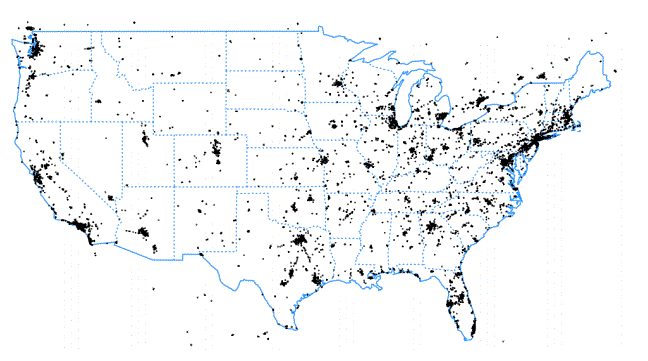It is a rare day when I agree with a Seattle Times editorial about an education subject, but today is that day.
The
ST editorial is about out of control college textbook prices and how they are harming students. And it's true. In fact, even more disturbing than they describe.
Let me tell you a story.
A few years ago, I was scheduled to teach Atmospheric Sciences 101, with an expected enrollment of around 240. Traditionally, my department had used the latest version of what we considered the best introductory textbook, one with a list price of around $130. The U Book store planned to order a large number of new books (which they sold at list) and have a modest number of used books at 30% off, around 95 dollars. So perhaps they would order 150 new books.
I would inevitably get a call from a representative of the company that distributed the book we generally used...and often several competitors. Now keep in mind there was quite a bit of money at stake (130 x 150 = $19,500).
The book company representative called and told me about the many benefits of the latest edition. But then it got seedy. The representative offered to take me out to dinner...and yes, my wife was included.
And I could pick any restaurant in town. I never accepted such offers--completely unethical.
I told the book representative that I planned to ask the University Book Store to only order used books, acquiring additional copies on the market to get enough. That a $130 textbook was a poor value. He said he would get back to me.
Then the next day the book company's rep called. He said he had a special deal for me. He would provide NEW books at a price
less than the U Book Store's used price. But to do so, I would have to either add or take away something from the book. Add a few pages of my own or take away a chapter. And they would change the title. In short, the same new book, but at a price just under the University Book Store used price. A little surprising.
I agree to this deal..thinking I could save my student's some money. But I played into the reps hands in one way: my discount books would not be attractive to others on the used book market later and the students would have a harder time selling them back to the U Book Store...those book folks are clever!
And part of their corrupt little game is to produce new editions every year or so, even though 95+% of the books are the same. So the "new and improved" book being pushed was hardly different than previous editions (I checked page by page). But it would help undermine the used book market.
Smartening up a bit, my next time teaching the class I insisted on using only used books and told students to purchase
any edition of the book of the past ten years. And I told them to do their shopping online, since Amazon and others often sold $150 list books for $20-30 used. Much cheaper than the used book price at the University Book Store. Parenthetically, my son, who was going to college at the time, bought all his books online, saving me a
lot of money.
Now let me make the case that many of these textbooks are poor values. Take a very popular book that we have used for Atmos. Sc. 101:
Ahren's Meteorology Today. 640 pages, lots of color.
And $ 161.48. The electronic (Kindle) Version is $ 125.00. Hard to believe.
Compare this book to another good weather book, one I am kind of fond up (see below). Just as good color graphics and quality. 281 pages. List price of $ 29.95 but available new for $22.00 (until recently 19.95). Used books for 5-10 dollars. Yes, my book. And the University of Washington Press, the publisher, must have been selling the book to Amazon at substantially less than $20.00
So using the costs per page of my book, Ahrens should list for $ 68.00 and available on Amazon for around $50.00 But Ahrens is one of the most popular 101 books in the U.S. and has huge volumes...and thus should be cheaper. And virtually all the material is found in past (and FAR cheaper) editions.
How many ways can one spell R-I-P O-F-F? To get faculty hooked, Ahrens offers all kinds of extras for the instructor, like test questions, visuals, and homework questions. Not much use for the student's though.
There are a number of other introductory atmospheric sciences book with crazy high prices, like this one at $135.00
As described in the Seattle Times editorial and in
many other places, textbook prices have gone up much faster than inflation. It has become a significant proportion of student education costs. Many students are NOT purchasing required textbooks, something I confirmed last time I taught 101. I try to ensure there are few copies in the UW library under short-term loan, but those are always checked out.
Why has the current system continued to exist? There is certainly a lot of self-interest going on. Textbook companies make a killing. Professors who write textbooks make a lot more royalties for expensive books. And college book stores, which get a percentage of the transactions, bring in much more with high-priced books. And book publishers play up to faculty with exam/hw materials, prepared powerpoints, and a lot more. Everyone does well except the debt-laden student.
Fortunately, technology offers a way to deal with the problematic publishers. Professors such as myself need to create books that are in the public domain and available electronically. There are a
number of groups working for free or inexpensive online college textbooks.
I am trying to get my department to create an introductory meteorology textbook. We have experts in all major areas of atmospheric sciences. Each of us could write a chapter on our specialty area, which would be easy for us since we know the material. A pretty decent online book could be written is a few weeks that way, certainly at least as good, if not better, than the expensive ones shown above. Perhaps we could charge $30 for it and use the money for an undergraduate scholarship. I really hope my colleagues will work with me on this project.
And, if you think college textbook prices are a problem, K-12 text prices are just as bad.











.gif)









.jpg)


































